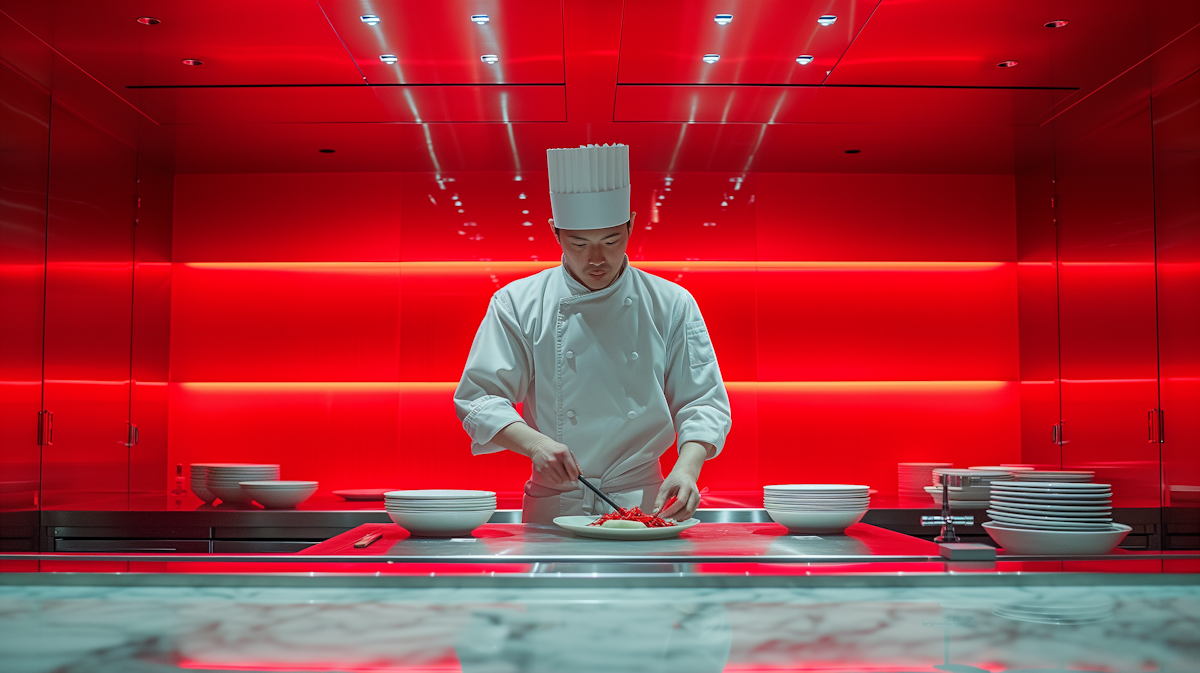Off-site dining and meal delivery are here to stay .
Even with restaurants made entirely for on-site dining, the delivery service is still thriving. In November 2021, delivery sales in the UK were up 192% than in the same month in 2019. We're seeing similar numbers in France and across Europe.
Now that delivery has become a structural source of revenue for many restaurants, operators are forced to reconsider the practicality of things, and some are choosing to move online order processing to a Dark Kitchen, which offers many benefitsThis offers many advantages, starting with a better allocation of budgets, targeted marketing actions, optimization of delivery platforms and, finally, profitability... Dark Kitchens are streamlined units for meal production. They do not have dining rooms but are strategically located in low-rent areas near residential and/or business districts to facilitate delivery. However, not all Dark Kitchens are similar. There are different modelsand their profitability and scalability differ greatly.
In this article, we will examine the most popular concepts and highlight their main characteristics.
A branded Dark Kitchen
It is a Dark Kitchen through and through. A single kitchen produces a single take-out menu.
Characteristics: the kitchen is located in a lower rent area near densely populated neighborhoods. It has a relatively small real estate footprint, is streamlined, and has a minimal number of employees on site. Orders and deliveries are managed by multiple aggregators to increase online visibility. Online orders from different platforms are centralized for easy management.
A home-based restaurant chain operating from one (or more) shared kitchen(s)
In this model, the company already has a home-based catering business, but the Dark Kitchen aspect is physically removed and run out of a shared kitchen space.
Features: a traditional restaurant rents kitchen space to separate its operations and expand its reach. The Dark Kitchen often operates only during peak hours. Staff rotates between the restaurant and the Dark Kitchen. Sometimes semi-prepared products are delivered from the restaurant to the Dark Kitchen.
The star model
The hub-and-spoke model includes a central production kitchen and several (pop-up) kitchens.
Features: The centralized kitchen (owned or leased) is located in a low-rent neighborhood. The production center is where most items are prepared in advance and then sent to smaller kitchens for finishing. These smaller units are located where the target customers live.
Multiple virtual brands, one shared (or owned) kitchen
This is a more elaborate configuration. A company runs multiple brands (usually different types of kitchens) in a shared or owned kitchen space. As with all Dark Kitchens, there are no on-site catering options.
Features: If no pop-up location is added to this model, the kitchen is usually located in a densely populated area with prime real estate. It is usually a large kitchen (but not required) with multiple production lines where different virtual brands are prepared. The brands are closely related (sushi, poke and chirashi, for example), which means they can be prepared by a team and sometimes even by a single person. In addition, ingredients can be purchased in large quantities to keep prices low.
Guest kitchen
This model also relies on virtual brands, but production is not done in-house but outsourced to other restaurants, called guest kitchens.
Features: restaurants, hotels and other foodservice operators use downtime in their business to turn their existing kitchen into a black kitchen for other restaurant brands. In return, they receive a commission per item sold. In this way, the host kitchen optimizes the use of space and kitchen staff. The virtual brand company, on the other hand, can expand into new regions without the cost of setting up new production facilities.
Last thoughts
Choosing a particular type of Dark Kitchen depends on where delivery fits into your operational structure and your plans for expansion. What the different models have in common is that they work with multiple platforms, such as Uber Eats, Deliver, Glovoo and Just Eat. To streamline huge amounts of online orders, they centralize them on a tablet that sends them to a single printer.
About Apicbase
Apicbase is a leading F&B management platform for multi-venue restaurants, hotels and Dark Kitchens to manage inventory, procurement, menu engineering and food costs. The platform integrates with RusHour and several POS systems.
















